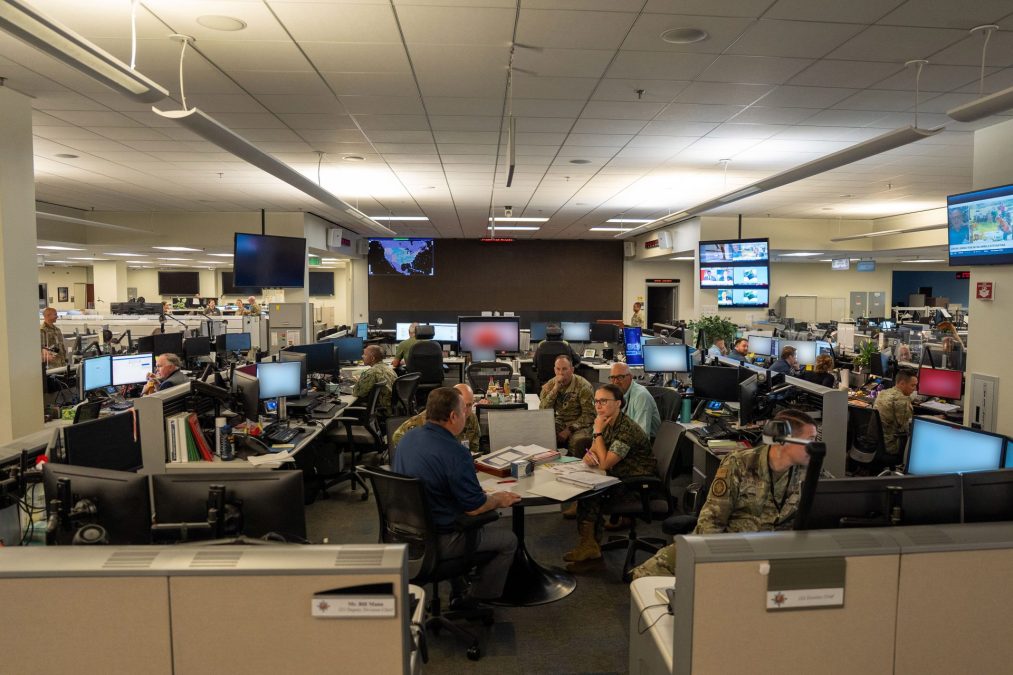How Transcom brought elements of tactical surprise and other support to Operation Midnight Hammer

U.S. Transportation Command helped to misdirect enemies during the American military’s strikes against Iranian nuclear facilities in late June, according to senior officials familiar with the tactical deception plans behind Operation Midnight Hammer.
The attacks involved Tomahawk missiles launched from a submarine, more than 125 aircraft including refuelers and fighter jets, as well as seven B-2 Spirit stealth bombers that dropped 14 “massive ordnance penetrators” — or 30,000-pound bunker-busting bombs — designed to destroy deep, underground targets. Decoys and other deceptive maneuvers were deployed to ensure the bombers remained undetected and to neutralize Iran’s air defense systems.
In the aftermath of the assault, senior defense leaders confirmed that the strike package was supported by Transcom, Cyber Command, Strategic Command, European Command, Space Command and the Space Force. However, details about each of those components’ unique contributions largely remained sparse in the immediate wake of the strikes.
On a recent tour of Transcom headquarters at Scott Air Force Base, Illinois, military officials shared new details with DefenseScoop about the mobility support — and deceptive logistics — that the organization brought to the mission with the Joint Staff and its counterparts for Midnight Hammer.
“Hundreds of [Air Mobility Command] Airmen, including aircrew, and planners from Transcom, AMC, and the 618th Air Operations Center shaped the air refueling portion of the plans, while working closely with the Joint Staff, the other [combatant commands] and their components,” Transcom Director of Operations Maj. Gen. Daniel Tulley said. “This close coordination contributed to mission success, which required significant air refueling operations for both the feint and the bombers flying nonstop for 36 hours and more than 13,000 miles.”
Iran’s three primary nuclear facilities at Fordow, Natanz and Esfahan were targeted in the attack, and initial assessments indicated damage to all three sites.
At a Pentagon press briefing with reporters several days after the strike, Defense Secretary Pete Hegseth and Chairman of the Joint Chiefs of Staff Gen. Dan Caine highlighted the significance of “tactical surprise” in the complex operation.
“The U.S. employed several deception tactics, including decoys, as the fourth- and fifth-generation aircraft pushed out in front of the strike package at high altitude and high speed, sweeping in front of the package for enemy fighters and surface-to-air missile threats,” Caine said.
Using logistical activities to mislead adversaries and divert them from real movements is not new. But according to Tulley and other senior Transcom officials, Midnight Hammer underscored the potential for perception management and deceptive logistics to enhance certain military operations now and in the future.
“Our logistics expertise readily translates into a deep familiarity with adversary approaches to logistics,” Col. Michael McFeeters, chief of Transcom’s special activities division, told DefenseScoop.
“Maj. Gen. Tulley worked with our J2 [intelligence and security directorate] to establish a targeting cell in 2024, which in addition to actively identifying and characterizing potential targets also conducts planning and coordination with other combatant commands to ensure everything we’re doing is synchronized across the Joint Force,” he explained.
McFeeters described a targeting cell as an element that identifies, analyzes, prioritizes, and ultimately develops targets in support of a commander’s objectives.
“In our case, the team looks to address all-domain threats and opportunities in support of global mobility and logistics operations,” he said.
U.S. military leaders have not revealed the full extent of the damage associated with the strikes, to date.
“This operation highlighted Transcom’s ability to plan and execute sensitive operations with a high degree of operational security, all without disrupting our normal global operations. The Global Operations Center looked no different than it does on a regular day at Transcom,” Tulley told DefenseScoop.
And since “that feint worked swimmingly,” he added, command officials are exploring how adversaries — including those beyond Iran — might react, or let it influence and shape future moves.
“So without getting into any classified topics, know that we’re looking into that,” Tulley said.




